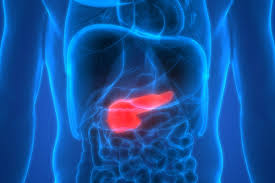Pancreatic Cancer Cells Build Protective Barriers to Therapy Using Normal Tissue Turnover
 A new study led by researchers from NYU Grossman School of Medicine shows that certain immune cells break down structural proteins into molecules that trigger the building of dense tissue, a known barrier to therapy. The study, published in the Proceedings of the National Academies of Sciences, revolves around the dense protein meshwork that supports organs and helps to rebuild damaged tissue. Collagen protein fibers, the major component of the mesh, are continually broken down and replaced to maintain tensile strength, and as part of the wound healing process.
A new study led by researchers from NYU Grossman School of Medicine shows that certain immune cells break down structural proteins into molecules that trigger the building of dense tissue, a known barrier to therapy. The study, published in the Proceedings of the National Academies of Sciences, revolves around the dense protein meshwork that supports organs and helps to rebuild damaged tissue. Collagen protein fibers, the major component of the mesh, are continually broken down and replaced to maintain tensile strength, and as part of the wound healing process.
Past studies have shown that immune cells called macrophages contribute to a process called desmoplasia, which is caused by the abnormal turnover and excessive deposition of collagen that insulates pancreatic cancers. In this environment, macrophages are also known to engulf and break down collagen through the action of a protein called the mannose receptor (MRC1).
The current study found that the degraded collagen increased the amount of arginine, an amino acid that is used by the enzyme nitric oxide synthase (iNOS) to produce compounds called reactive nitrogen species (RNS). This, in turn, caused neighboring, supportive stellate cells to build collagen-based meshes around tumors, say the study authors.
“Our results revealed how pancreatic tumors program macrophages to contribute to the construction of fibrotic barriers,” says first study author Madeleine LaRue, PhD. At the time of the study, LaRue was a graduate student in the lab of senior study author Dafna Bar-Sagi, PhD, the S. Farber Professor of Biochemistry and Molecular Pharmacology and Vice Dean for Science at NYU Langone Health. “This molecular framework could be harnessed to counter pro-cancer changes in structural tissues surrounding tumors,” adds LaRue.
Pancreatic cancer is the third leading cause of cancer-related deaths in the United States, with a five-year survival rate of 10%. Pancreatic cancer remains difficult to treat in large part due to the extensive network of fibrotic tissue around tumors. This network not only blocks access by therapies, but also promotes aggressive growth.
For the current study, experiments showed that macrophages grown in dishes of nutrients (cultures), and converted into their cancer-tolerant setting (M2), broke down far more collagen than macrophages that attack cancer cells (M1). Further, the team confirmed with a series of tests that M2 macrophages have higher levels of enzymes that generate RNS, such as iNOS.
To confirm these findings in live mice, the team implanted stellate cells that were either “pre-fed” with collage, or maintained in an unfed state, into the flanks of the study animals along with pancreatic cancer cells. The team observed a 100 percent increase in the density of intra-tumoral collagen fibers in tumors derived from cancer cells co-implanted with stellate cells pre-treated with collagen.
Importantly, the study showed for the first time that macrophages near pancreatic cancer cells, not only take in and break down more collagen as part of scavenging for proteins that feed abnormal growth, but also are changed by the scavenging, such that their energy processing system (metabolism) is rewired and signals for fibrotic buildup.
“Our team uncovered a mechanism that connects collagen turnover to the building of a treatment-resistant environment around pancreatic tumors,” says Bar-Sagi. “As this dense environment is a major reason why pancreatic cancer is so deadly, a better understanding of links between protein scavenging and the building of protective barriers will be needed to improve the treatment of this devastating malignancy.”